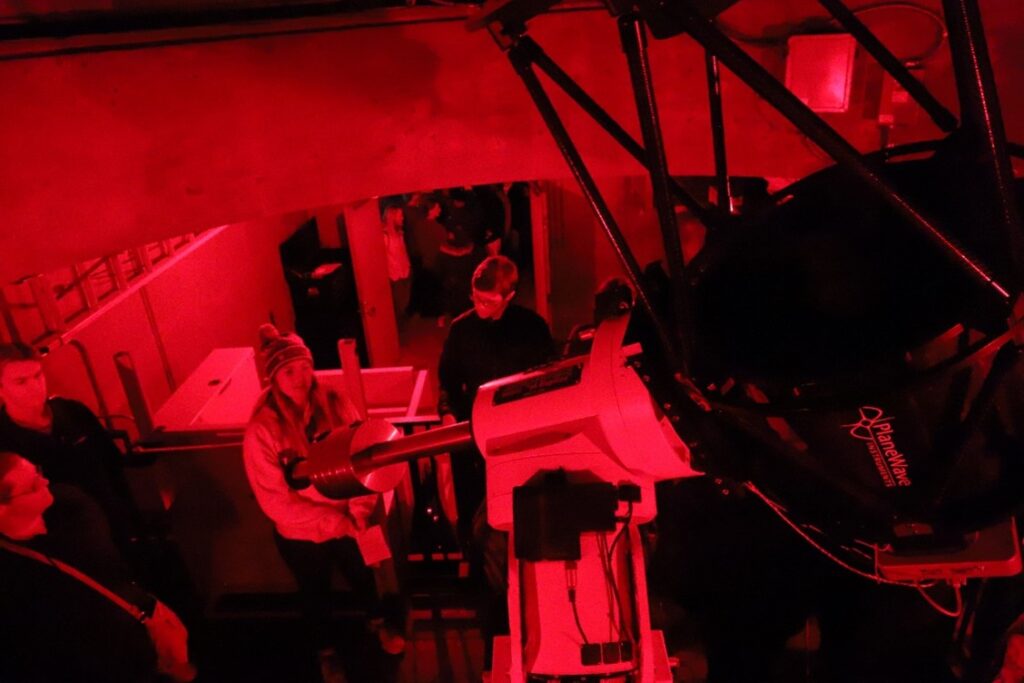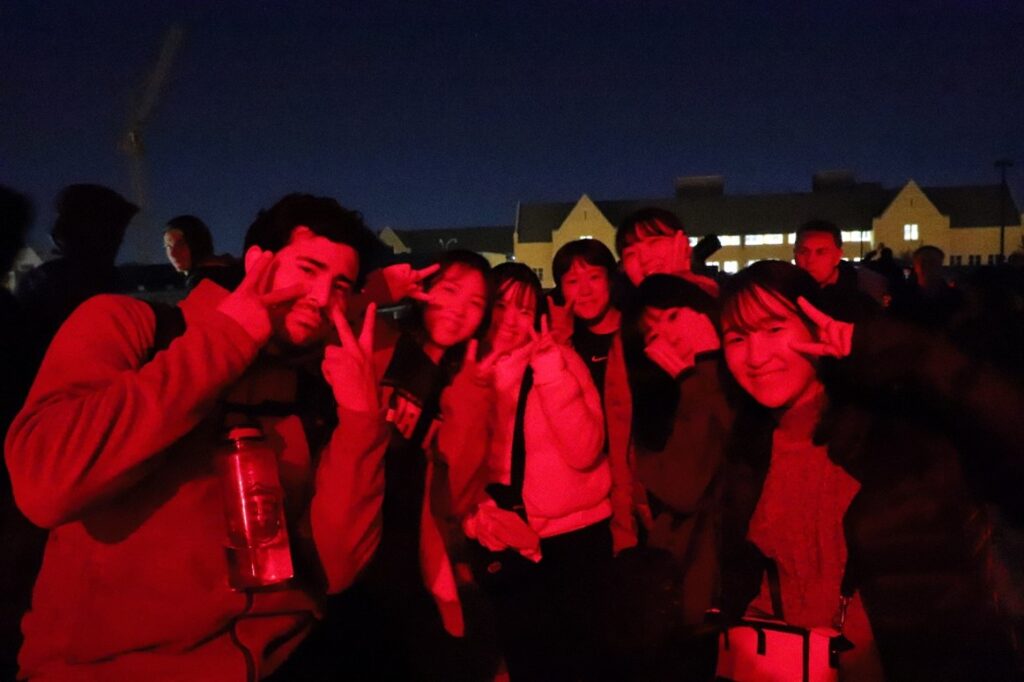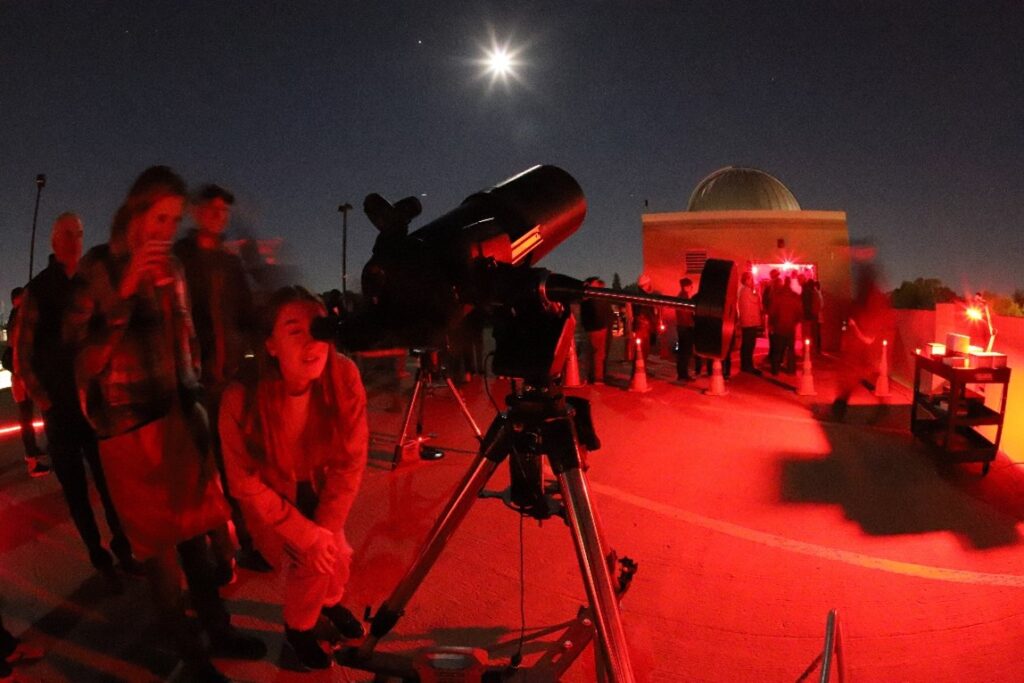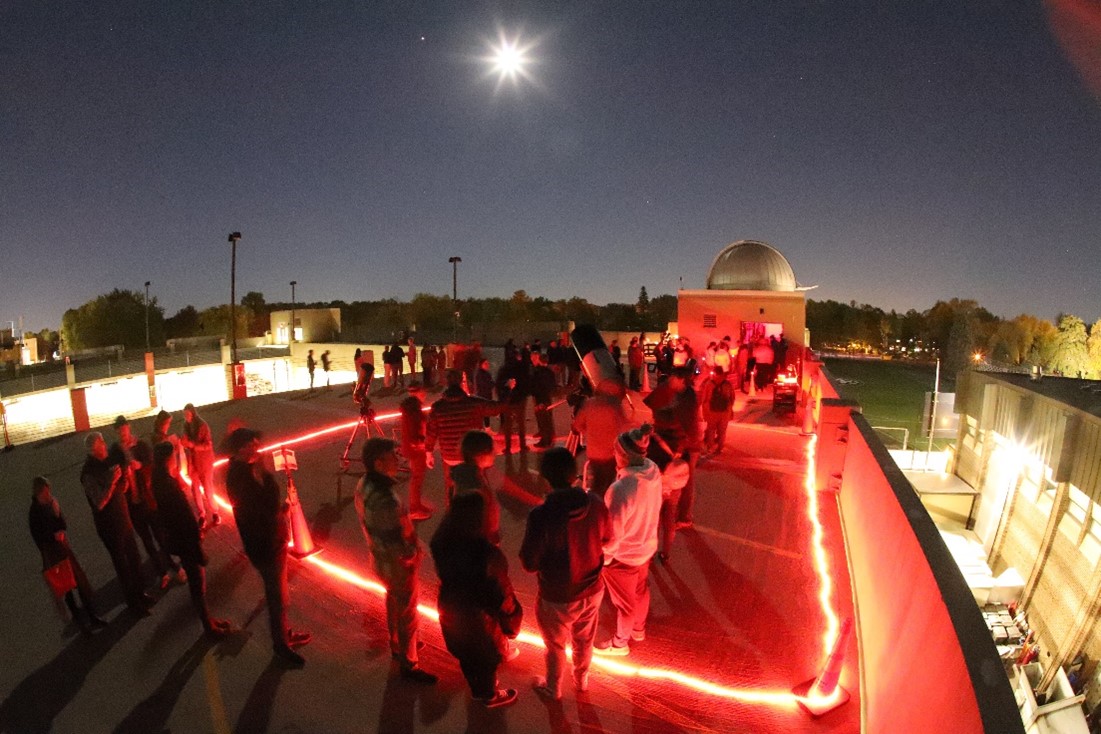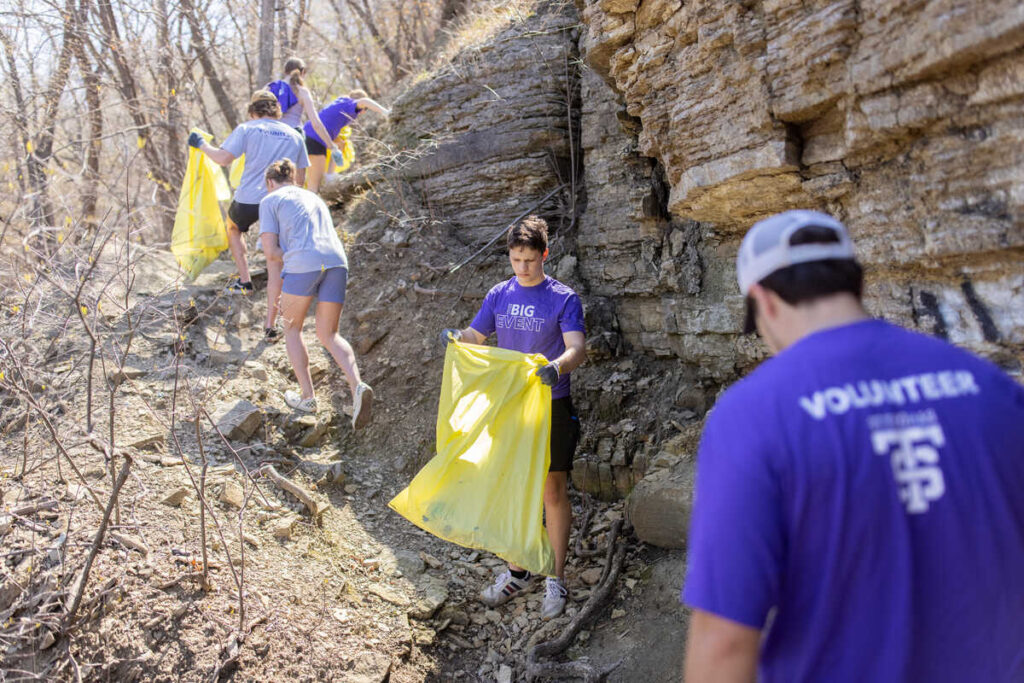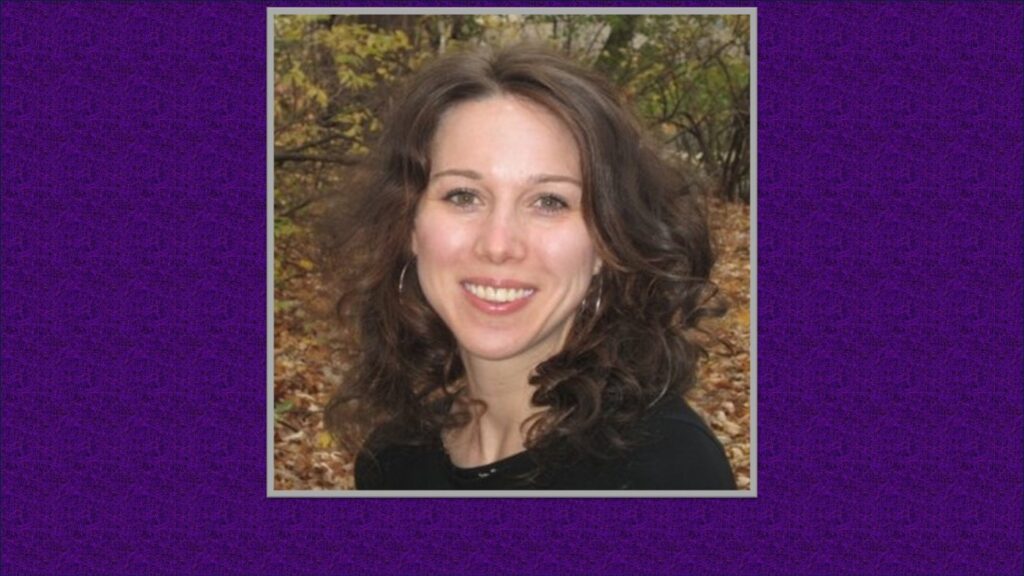The morning of Oct. 7 was gray and rainy, but the clouds cleared just in time for the St. Thomas Observatory’s biggest event of the year: Family Weekend.
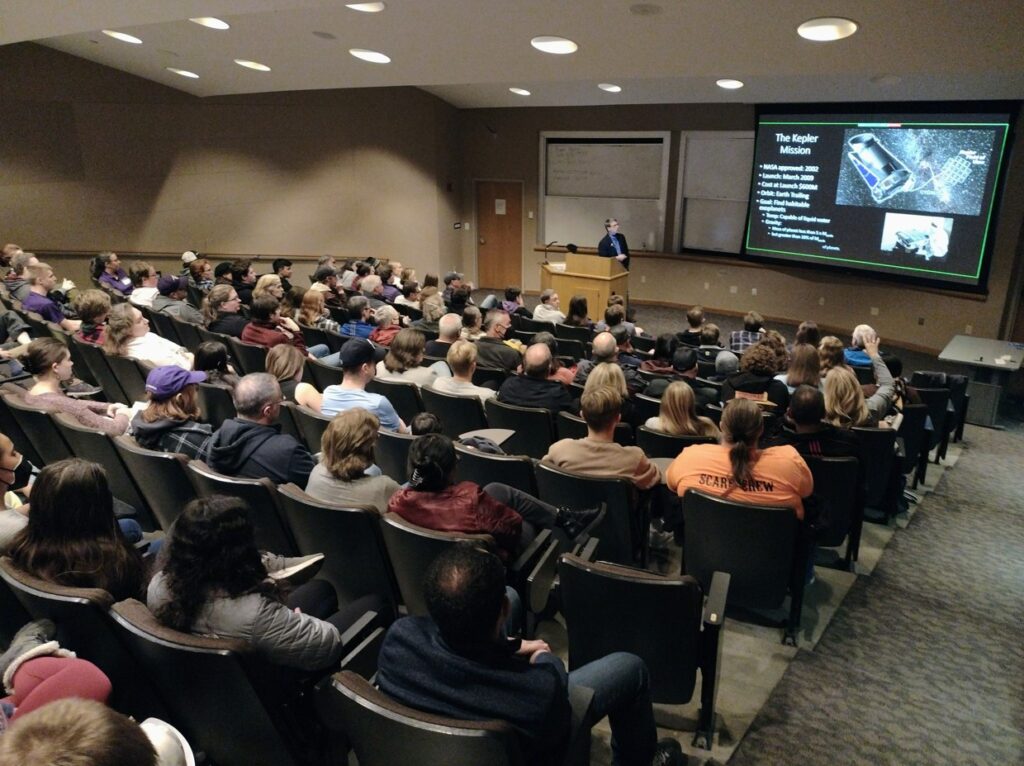
The evening began with a public lecture by physics faculty member Rob Davies, a radiation effects engineer and nuclear physicist who worked for Ball Aerospace on NASA’s Kepler Telescope. Launched in 2009, Kepler’s four-year mission was to find habitable exoplanets – planets orbiting stars other than our sun.
Davies was part of the team tasked with figuring out why the telescope suddenly went into “safe mode” twice during its first two months of operation. The answer? Galactic cosmic rays. These very energetic charged particles interfered with electronics on the telescope, sending erroneous signals to one of its computers and shutting it down.
Students and their families asked great questions of Davies after the lecture: Were there other theories about why the telescope malfunctioned? How did you rule them out? How did scientists choose the small section of the Milky Way that Kepler studied? How did you become a radiation effects engineer?
Over 200 people toured the observatory after the presentation. Faculty members Marie Lopez del Puerto and Marty Johnston guided them through the facility. While waiting in line, one parent remarked how surprising it was that her son’s astronomy professor greeted him by name! It is having small classes, building relationships and the many opportunities students have to get involved that make St. Thomas special.
Electrical engineering and physics double major Sophie Woessner gave tours of the dome and explained features of the university's 17-inch diameter robotic telescope. In the adjacent control room, faculty member Gerry Ruch illustrated how digital images of distant objects are acquired and processed. Outside, faculty members Mike Wood and Adam Green worked with lab manager Mike Peters to operate five portable telescopes displaying images of Jupiter, Saturn, the moon and a binary star system.
As visitors enjoyed spectacular views of the heavens, they warmed up on this chilly night with popcorn and hot chocolate served by biochemistry major Isabell Schlangen. The upper deck of the Anderson Parking Facility was buzzing with enthusiastic conversations about black holes, the Big Bang and the possibility of extraterrestrial life.
